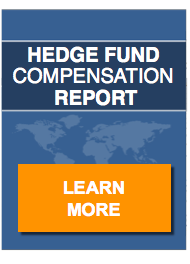The trend in recent years of institutional investors bypassing fund of funds and opting for direct investment into hedge funds based upon investment consultant recommendations is certainly no secret within the hedge fund industry.
While the FoHF industry has experienced net redemptions each year dating to 2007, the number of institutional investors utilizing the service of investment consultants tripled in the past decade according to Deutsche Bank in their 2012 Alternative Investment Survey. The survey estimated that the trend actually accelerated more recently, with consultant use amongst such investors nearly doubling in proportion to more than 60 percent in the past year alone.
Such a sea change comes with inevitable challenges, as well as some unintended risks. In particular, hedge fund managers are now faced with a hybrid form of concentration risk.
Concentrated Control
Concentration risk is nothing new and has always been an issue for fund managers, be it in the form of strategy allocation, location or underlying assets. This newer form of concentration risk isn’t tied to those traditional elements, but instead to the investment consultants advising institutional clients.
According to London-based researcher Preqin Ltd., roughly 60 percent of capital flowing into hedge funds now comes from institutional investors, up from 45 percent just a few years back. Combined with the aforementioned proclivity of such investors to rely on consultant recommendations, hedge fund managers are now faced with the prospect of excessive concentration of power in the hands of a relatively small group of highly influential investment consultants.
Two-edged Sword
Fact is the majority of institutional investors don’t make independent investment decisions regarding which hedge funds to invest in, relying instead on the advice of their consultants. This can prove to be a two-edged sword for the fund manager. While a buy recommendation on the part of a consultant is important to a fund manager in today’s environment, and brings with it large dollars, a sell recommendation can prove perilous. According to Don Steinbrugge, CFA, a managing member at Agecroft Partners, such a redemption represents investor concentration risk for the fund manager. Steinbrugge says:
A manager may think that the largest investor is only responsible for five percent of the assets but it could turn out that 40 percent of assets are controlled by one consultant. If the consultant changes its buy recommendation to sell then this could have major implications for the fund.
Chief amongst the risks of such a redemption is that of financial stability, given the overall percentage of a portfolio that would potentially be affected. Without doubt, a large enough redemption could cause damage to the underlying portfolio, as the manager would be forced to sell the more liquid assets to meet the redemption, corkscrewing the value of remaining assets.
Moreover, such an event couple potentially result in the necessity of enacting a gate or suspending redemptions — unpleasant prospects that can cause permanent reputation damage. “If you have a large percentage of assets under management leave the fund at one time it could tarnish a manager’s image in the marketplace,” said Steinbrugge.
A mitigating factor in terms of this type of concentration risk is that ultimately, consultants are concerned with their own reputations and aren’t quick to switch recommendations unless there are major issues that arise (e.g. regulatory events, etc.), as doing so can reflect badly on them.
Moreover, it’s in their interest to try to key tabs and to track for the potential of this type of risk for the sake of all parties.
But, as James Lewis, head of Europe at Albourne Partners, points out, “With 240 clients invested in about 2,000 funds, we cannot know in absolute terms where every dollar of our clients’ money is invested. However, where we can, we estimate, and in the cases we know we carefully track this data.”


